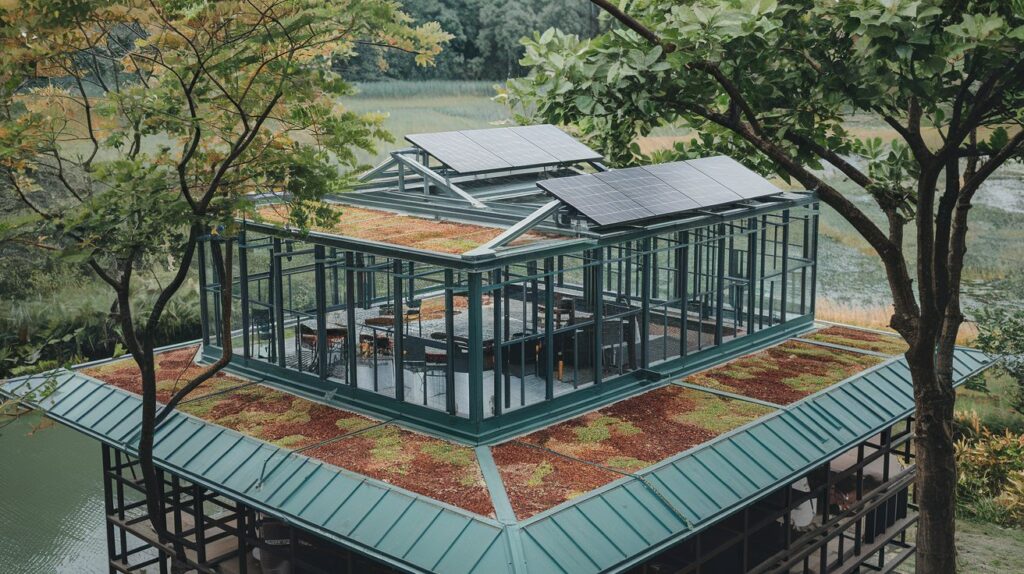The durability and strength of metal structures make them a popular choice for various applications, from industrial warehouses to agricultural facilities. However, one critical aspect often overlooked in their design and maintenance is energy efficiency. As energy costs continue to rise and environmental concerns grow, maximising energy efficiency in metal buildings is not just beneficial-it’s essential.
Understanding the Importance of Energy Efficiency
Energy efficiency refers to using less energy to perform the same task or function. In the context of metal buildings, this can mean significant savings on energy bills and a reduced carbon footprint. Poor insulation or inefficient design can lead to loss of heat in winter and excessive heat gain in summer, causing HVAC systems to work harder and increasing operating costs.
Strategic Insulation Solutions
One of the most effective ways to improve energy efficiency in metal structures is through high-quality insulation. Proper insulation helps maintain consistent indoor temperatures, leading to savings on heating and cooling costs. Investing in premium thermal solutions for metal buildings can create a more comfortable indoor environment while reducing energy consumption.
Metal buildings often come with exposed steel surfaces that conduct heat, potentially leading to hot spots in the interior. Using specialised insulation materials can mitigate this issue. Techniques and products designed specifically for metal buildings will not only improve thermal performance but can also help control condensation, preventing moisture issues that can affect the integrity of the structure.
Considerations when selecting insulation include:
- R-Value: This is a measure of thermal resistance, higher values indicate better insulation performance.
- Moisture Resistance: Insulation designed to repel moisture will remain effective over time and reduce the risk of structural damage.
- Installation Ease: Some insulation products are easier to install than others, which can save time and labour costs.
When choosing insulation, look for options that are tailored to the specific needs of metal buildings. Products that can be easily integrated into the building’s design can make a world of difference.
Selecting the Right Windows and Doors
Windows and doors play a significant role in a building’s overall energy efficiency. In metal structures, which often feature large open spaces, the choice of windows can particularly impact heating and cooling needs.
- High-Performance Glazing: Opt for double or triple-glazed windows with low-emissivity (Low-E) coatings. These can significantly reduce heat loss in winter and heat gain in summer.
- Proper Sealing: Ensuring that all windows and doors are correctly sealed can prevent drafts and reduce energy wasted through leaks.
- Strategic Placement: Consider the placement of windows for natural light and ventilation. This can reduce the need for artificial lighting and cooling.
HVAC System Efficiency
The HVAC system is typically one of the largest energy consumers in any building. In metal structures, a well-designed HVAC system is crucial due to the unique challenges posed by metal’s heat-conductive properties. Here are a few strategies to maximise HVAC efficiency:
- Regular Maintenance: Scheduled checks and filter replacements can keep your system running efficiently.
- Energy-Efficient Components: Consider upgrading to energy-efficient systems, such as variable-speed fans and high-efficiency heat pumps.
- Zoning: Implementing a zoning system allows for tailored heating or cooling in different areas of the building, reducing overall consumption.
Emphasising Smart Design Choices
The initial design stage is a crucial opportunity to incorporate energy-saving features. Here are some design principles to consider:
- Orientation: Positioning the building to take advantage of natural sunlight can reduce energy usage for lighting and heating. South-facing windows can harness solar gain during the winter months, while shading can prevent overheating in the summer.
- Roofing Choices: Cooler roofing materials can help reflect sunlight away from the building, thus reducing the inner temperature and reliance on air conditioning.
- Sustainable Materials: Using materials that are sustainably sourced and offer good thermal performance can be a dual benefit-reducing energy costs while minimising environmental impact.
Embracing Renewables
Incorporating renewable energy sources can significantly enhance a metal building’s energy efficiency. Solar panels, for example, can be installed on the roof to harness solar energy, thus offsetting electricity costs and reducing reliance on grid power.
- Incentives and Grants: Investigate local incentives for renewable energy installations many governments offer tax credits or grants to encourage renewable energy adoption.
- Battery Storage: Consider a battery storage system to make the most of the energy generated, providing a reserve for times when generation is low.
Continuous Energy Monitoring
Energy efficiency doesn’t end once a building is completed. Continuous monitoring can provide insights into energy consumption patterns, enabling further enhancements. Smart meters and energy management systems will allow for real-time tracking and adjustments to maintain efficiency over time.
Conclusion: A Holistic Approach
Maximising energy efficiency in metal structures is a multi-faceted endeavour that requires thoughtful planning, investment, and ongoing attention. By selecting the right insulation, windows, and HVAC systems, designing mindfully, incorporating renewable energy, and consistently monitoring efficiency, building owners can not only conserve energy but also lower operational costs.
In today’s climate of rising energy costs and environmental awareness, these strategies do not merely contribute to a better bottom line they promote a sustainable future and a more comfortable living or working environment. By embracing these energy-efficient practices, you can ensure your metal structure not only stands the test of time but also thrives in the face of future challenges.

